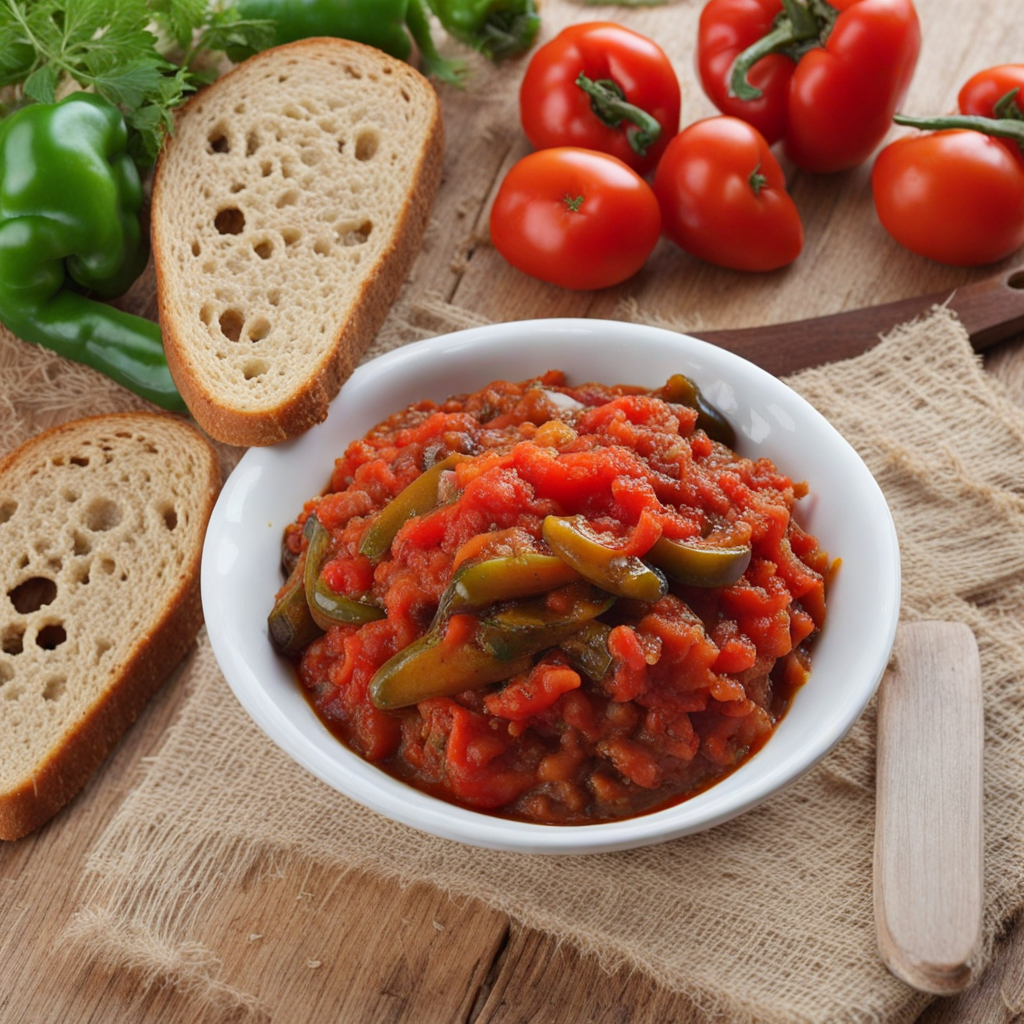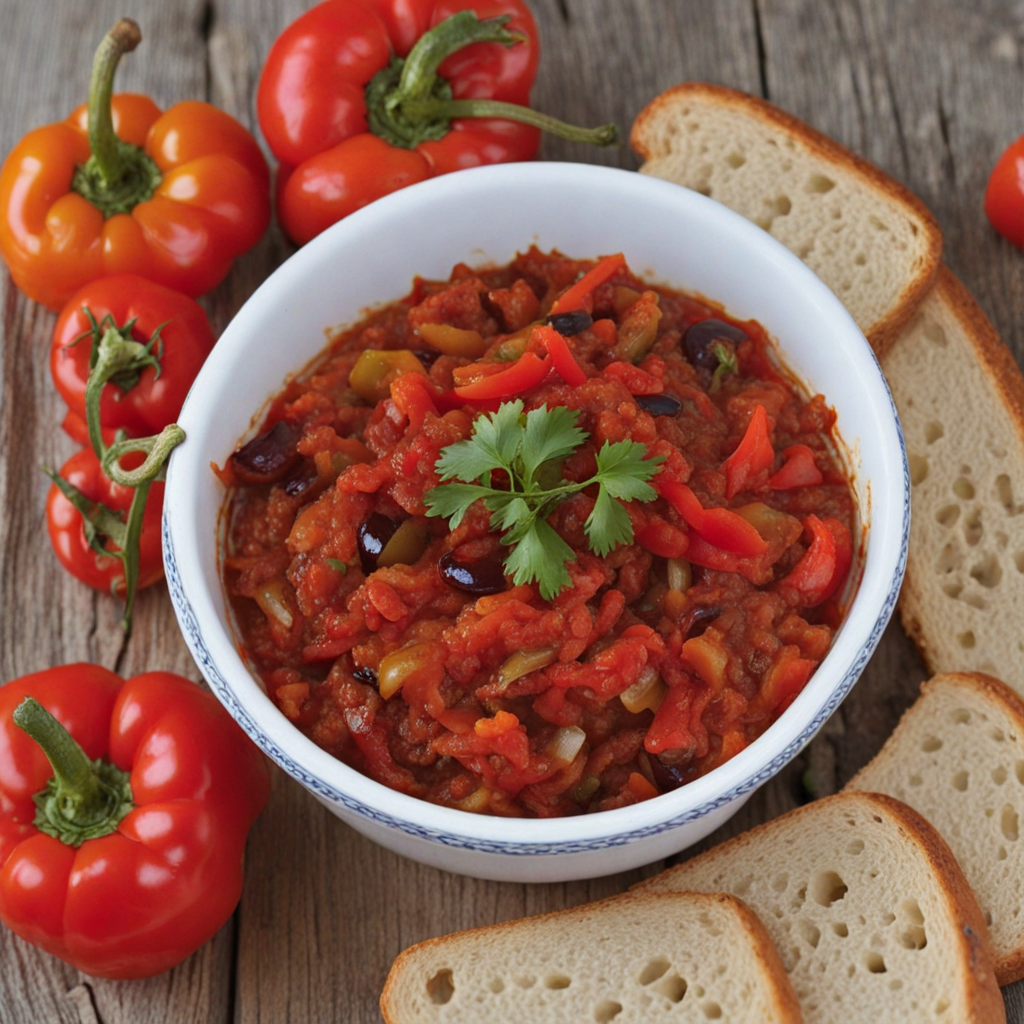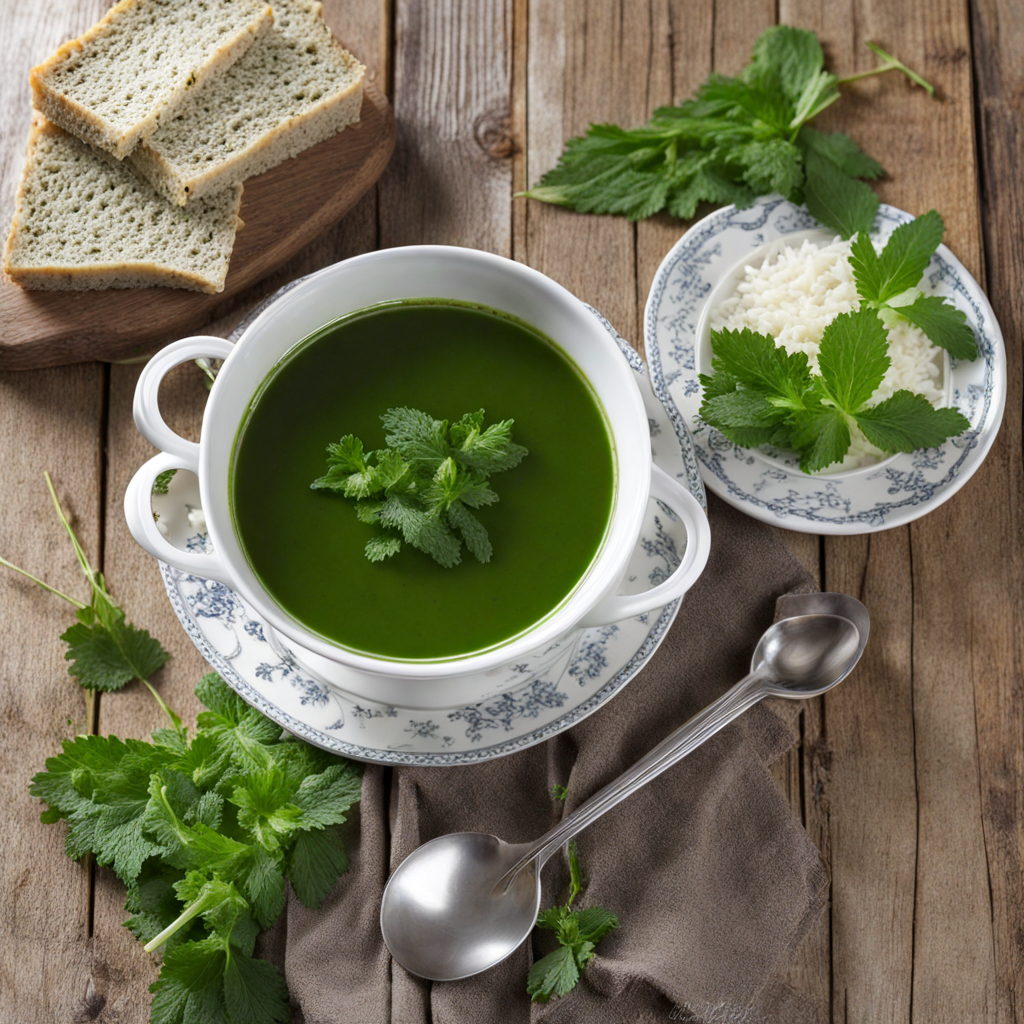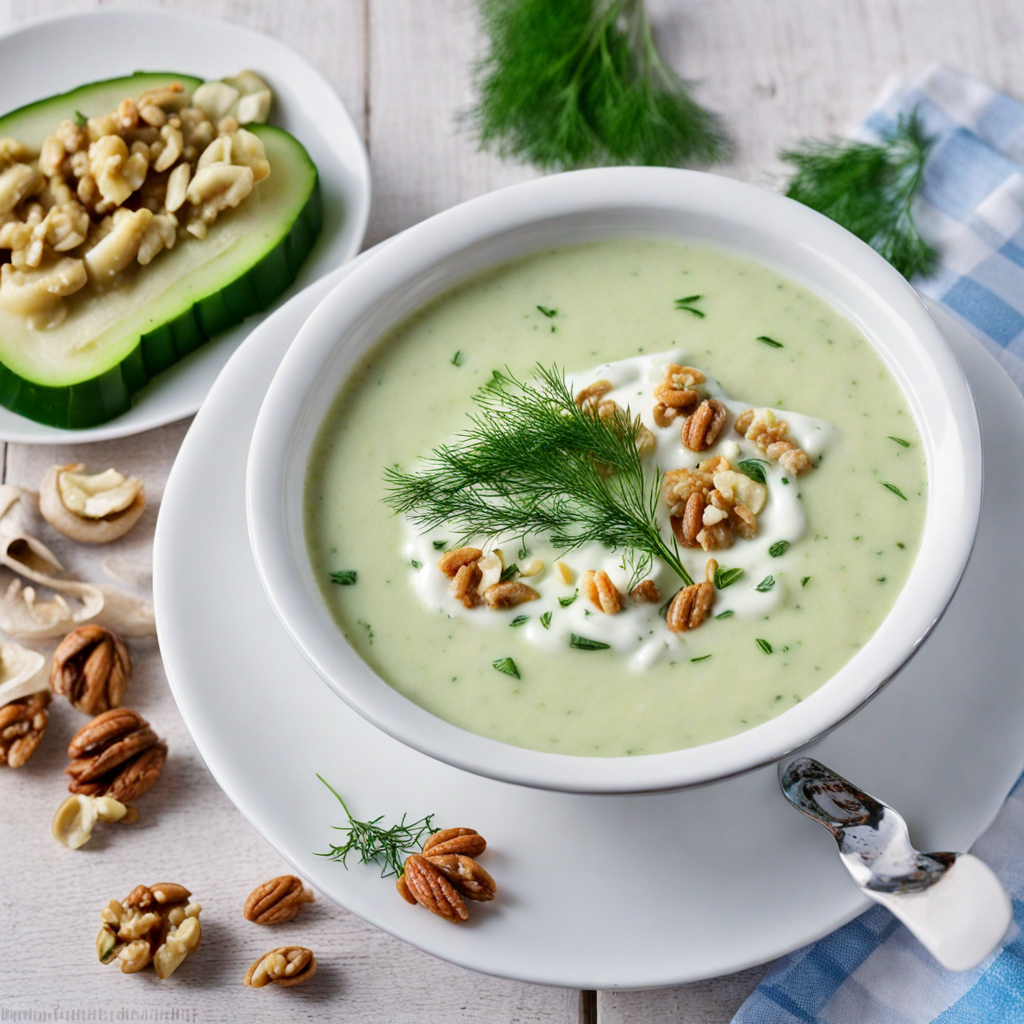Lyutenitsa
Lyutenitsa is a traditional Bulgarian condiment that embodies the rich flavors of the Balkans. This vibrant, thick spread is primarily made from roasted red peppers, tomatoes, garlic, and various spices, creating a robust and slightly smoky taste profile. The peppers are usually fire-roasted, which enhances their sweetness and adds depth to the overall flavor. Each ingredient plays a crucial role, with the roasted peppers providing a sweet and earthy base, while the tomatoes contribute acidity and freshness. The garlic adds a punch of flavor, making Lyutenitsa a versatile addition to many dishes. What makes Lyutenitsa particularly appealing is its versatility in the kitchen. It can be enjoyed as a spread on fresh bread, a dip for vegetables, or a flavorful accompaniment to meats and cheeses. Its texture is smooth yet slightly chunky, allowing it to cling beautifully to various foods. Additionally, many families have their own recipes, which means you can find variations that include other ingredients like carrots or even nuts, giving each jar a unique twist. This makes every tasting an opportunity to discover new nuances of flavor. Beyond its delicious taste, Lyutenitsa is also a reflection of Bulgarian culture, often prepared in large batches during the summer when peppers are in season. It’s a staple in many households, symbolizing the warmth of home-cooked meals and shared moments with family and friends. As you savor this delightful spread, you’ll not only be enjoying a taste of Bulgaria but also experiencing a culinary tradition that has been passed down through generations. Whether slathered on a sandwich or used as a topping for grilled meats, Lyutenitsa promises to elevate your dining experience with its bold, comforting flavors.
How It Became This Dish
The Rich History of Лютеница: Bulgaria's Beloved Pepper Spread #### Origins and Ingredients Лютеница, pronounced "lyutenitsa," is a traditional Bulgarian spread that embodies the heart and soul of the nation’s culinary heritage. Its primary ingredients include roasted red peppers, tomatoes, garlic, and spices, often with the addition of eggplant or carrots. The origins of лютеница can be traced back to the rural practices of preserving the bountiful harvests of summer vegetables, particularly peppers and tomatoes, which thrive in Bulgaria's fertile soil. The exact historical timeline of лютеница is somewhat murky, but it is believed to have emerged in the 19th century, coinciding with Bulgaria’s awakening of national identity and cultural pride during the National Revival period. During this time, the practice of preserving food became essential, not just for sustenance, but also as a way to celebrate local agricultural traditions. Peppers, especially the sweet red variety, were a staple in Bulgarian cuisine, and their transformation into a savory spread was a natural evolution of culinary practices. #### Cultural Significance Лютеница is more than just a spread; it is a symbol of Bulgarian culture and identity. In many households, the preparation of лютеница is a communal activity, often involving family and friends coming together to roast peppers, peel tomatoes, and mix ingredients. This process is not only about creating a delicious condiment but also about nurturing relationships and traditions. The act of making лютеница is often accompanied by stories, songs, and laughter, reinforcing the social fabric of Bulgarian life. The spread is typically enjoyed with bread, served alongside various meats and cheeses, or used as a dip for vegetables. It is a staple in Bulgarian cuisine, featuring prominently in traditional dishes and celebrations. Whether at a family gathering, a festive occasion, or simply as part of daily meals, лютеница holds a special place in the hearts of Bulgarians. It is often referred to as “the taste of home,” evoking memories of childhood and familial love. #### Development Over Time As Bulgaria transitioned through various historical phases, so too did лютеница. In the late 19th and early 20th centuries, the spread began to gain popularity beyond rural households, particularly in urban centers. With the introduction of canning and preservation techniques, the production of лютеница became more industrialized. This allowed it to be sold commercially, making it accessible to a broader audience. By the mid-20th century, лютеница had firmly established itself as a national delicacy. During the socialist era, it was promoted as a symbol of local cuisine, and various brands emerged, each with its unique recipe and flavor profile. The state-run food industry emphasized the importance of traditional Bulgarian foods, and лютеница became a staple in state-owned grocery stores. The spread’s popularity continued to grow throughout the late 20th century and into the 21st century, partly due to Bulgaria's entry into the European Union in 2007. The globalization of food culture introduced a new audience to лютеница. Bulgarian expatriates began to share their culinary traditions with their new communities, and the spread started to gain recognition beyond Bulgaria's borders. #### Modern Variations and Global Influence In recent years, лютеница has undergone a renaissance, with artisanal producers experimenting with new ingredients and flavors. Some variations include adding nuts, herbs, or even different types of peppers, catering to contemporary tastes while still honoring traditional methods. This trend reflects a broader movement in the culinary world toward authenticity and quality, as consumers increasingly seek out locally sourced and handmade products. The rise of the internet and social media has also played a significant role in promoting лютеница on a global scale. Food bloggers and influencers have introduced the spread to international audiences, showcasing its versatility and rich flavor. Recipes for лютеница and its uses in various dishes can now be found online, and it has garnered a following among food enthusiasts looking to explore Balkan cuisine. Moreover, the spread has found its way into fusion dishes, appearing in gourmet recipes that blend Bulgarian flavors with international cuisines. Chefs have begun to incorporate лютеница into modern dishes, using it as a base for sauces, dressings, or even as a topping for pizzas. This adaptability highlights the timeless appeal of лютеница and its ability to transcend cultural boundaries. #### Conclusion Лютеница is much more than a simple condiment; it is a testament to Bulgaria's rich agricultural heritage, cultural identity, and communal spirit. From its humble origins as a means of preserving summer’s bounty to its status as a beloved national delicacy, лютеница has evolved alongside the Bulgarian people. As it continues to adapt and thrive in a globalized world, лютеница remains a cherished symbol of home and tradition for Bulgarians everywhere. Whether enjoyed on a slice of crusty bread or as part of a vibrant meal, лютеница carries with it the flavors of history, culture, and love, connecting generations through the shared experience of food. In every jar, there lies a story waiting to be tasted—a celebration of Bulgaria's culinary heritage that is destined to endure for years to come.
You may like
Discover local flavors from Bulgaria







